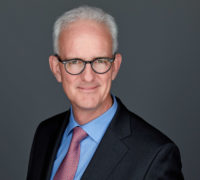
Digital sustainability: it pays to be a leader, not a laggard
Companies that excel in both digital and sustainable transformation attract a stock market premium, according to research. So, how do you tap into that value? ...

by Knut Haanaes, Frédéric Dalsace, James E. Henderson Published 19 April 2021 in Sustainability • 5 min read
When it comes to sustainable business, we find that many organizations have trouble moving from a theoretical understanding of why sustainability should be on their business agenda to what it should look like in practical terms.
Often this lack of clarity leads to the creation of a small Corporate Social Responsibility (CSR) team or a Corporate Sustainability Officer (CSO) role to ‘handle’ sustainability without the requisite mandate to build it into the foundations of the business.
However well-meant they are, from our experience with organizations of various sizes, we believe that such efforts are doomed to fail. Without a cross-organizational buy-in from the start, an organization cannot build a well-framed sustainability set-up and will likely fail in its intentions to bring about a sustainable business strategy.
Our experience working with diverse management teams has enabled insights into what really works when it comes to taking sustainability off the drawing board and bringing it into the business. The following four areas of practice will enable your business to achieve its sustainability agenda and drive it further from the get-go.
1. Sustainability and Leadership. It has become a truism to say that sustainability starts at the top but there is no doubting it; in firm after firm, we see the difference it makes. Simply put, somebody at the top –preferably the CEO – has to carry the sustainability flag. We have found that those CEOs who have had a first-hand experience with social and environmental issues in their childhood or during their career have a tendency to be more courageous on sustainability than those who do it because they are afraid of losing their license to operate.
“I am neither a pessimist nor an optimist; I am an activist,” said Schneider-Electric’s CEO Jean Pascal Tricoire. No doubt, his earlier experiences with Schneider-Electric in South Africa and China in the 1980s have played an influential role in that development towards action-based leadership.
But CEOs have other responsibilities and, therefore, we have observed that they often need a change maker who is the full-time driving force behind the sustainability effort. More often that not, this key role is filled internally by an executive who knows the business well and is considered as an insider.
2. Sustainability and purpose. This may be one of the first tasks that the CEO should carry out in the sustainability domain. Without a coherent purpose around sustainability, we often find that bold moves cannot be made in the business. Defining where you want to go; why you want to go there; and which objectives you want to pursue is key to establishing a set of purposeful core objectives.
The corporate purpose should encompass sustainability rather than solely the bottom line and there must be a genuine willingness to transform the business model if necessary. Ask what your business’s existing role is in the world and how it can be transformed into something more purposeful that addresses current problems. Your starting point should be to return to the firm’s DNA and to the fundamental job that its customers entrust it to perform.
3. Sustainability and Strategy. Leaders are now merging sustainability and strategy in terms of both pivoting the business to meet ‘big s’ sustainability goals and also identifying and exploiting ‘small s’ business sustainability strategies to gain competitive advantage. ‘Big s’ sustainability goals must be embedded into every facet of the firm’s operations to have a credible outcome. Very often, this can lead to the development of new business models that can lead to reinvention.
There are two ways to make this merger take place. One is to merge both job functions; for example, at Schneider Electric, the Chief Sustainability Officer is also the Chief Strategy Officer. “It is not a simple juxtaposition, it is amalgamation” said Gilles Vermot-Desroches, Schneider’s Senior Vice President (SVP) sustainability, “we are really talking about creating a new alloy here,” he added.
The second option is to elevate the function of Chief Sustainability Officer to an Executive Committee function. This is what has recently happened at French-Swiss building materials multinational Lafarge-Holcim, with the nomination of Magali Anderson to Chief Sustainability and Innovation Officer.
4. Sustainability and Systems. It is important to note that merging ‘big s’ sustainability and business sustainability will not take place if systems are not put in place. Remember: what gets measured gets done. Successful firms work in three complementary directions here. First, they systematically track non-financial data (e.g. CO2 emissions, percentage of suppliers assessed, gender pay gap, among others), and whenever possible, they use professional service firms to address these to increase internal and external confidence. Schneider’s Sustainibility Index is a great example of this. Secondly, their bonus systems to key managers include a sustainability component to incentivize progress. L’Oreal, Danone, Schneider are among the many companies that are now using the bonus system to reinforce their sustainability commitments. Thirdly, they translate these operational measures into ESG reporting and evaluations to ensure it can withstand the scrutiny of potential investors. With investment increasingly driven by ESG factors, it pays to make sure your reporting is robust and credible.

Lundin Chair Professor of Sustainability at IMD
Knut Haanaes is a former Dean of the Global Leadership Institute at the World Economic Forum. He was previously a Senior Partner at the Boston Consulting Group and founded their first sustainability practice. At IMD he teaches in many of the key programs, including the MBA, and is Co-Director of the Leading Sustainable Business Transformation program (LSBT) and the Driving Sustainability from the Boardroom (DSB) program. His research interests are related to strategy, digital transformation, and sustainability.

Professor of Marketing and Strategy at IMD
Frédéric Dalsace focuses on B2B issues sustainability, inclusive business models, and alleviating poverty. Prior to IMD, he spent 16 years as a Professor at HEC Paris where he held the Social Business / Enterprise and Poverty Chair presided by Nobel Laureate Professor Muhammad Yunus. Prior to his academic life, Frédéric accumulated more than 10 years of experience in the business world, both with industrial companies (Michelin and CarnaudMetalbox) and as a strategy consultant with McKinsey & Company. At IMD he is Co-Program Director of the Leading Customer – Centric Strategies program.

Professor of Strategic Management at IMD
James E. Henderson is Professor of Strategic Management at IMD, Program Co-Director of the Leading Sustainable Business Transformation program, and Program Director of the Strategic Partnership course. He helps companies achieve and sustain their competitive advantage either at a business unit, corporate, or global level through directing custom specific executive programs, facilitating strategy workshops, or teaching MBAs and executives.

17 July 2024 • by Michael R. Wade, Evangelos Syrigos in Sustainability
Companies that excel in both digital and sustainable transformation attract a stock market premium, according to research. So, how do you tap into that value? ...

11 July 2024 • by Stéphane J. G. Girod in Sustainability
A series of watershed events forced CHANEL out of its comfort zone, culminating in the launch of CHANEL Mission 1.5°. With this new strategy, the luxury fashion house embarked on a journey...

5 July 2024 • by Avni Shah in Sustainability
Creative industries have a key role to play in creating positive social change. Here are six key insights to help them achieve their goals. ...

3 July 2024 • by Richard Baldwin, Salvatore Cantale in Sustainability
The EU Corporate Sustainability Reporting Directive (CSRD) will impose comprehensive and standardized sustainability reporting responsibilities on firms, adding unprecedented complexity to mergers and acquisitions. ...
Explore first person business intelligence from top minds curated for a global executive audience